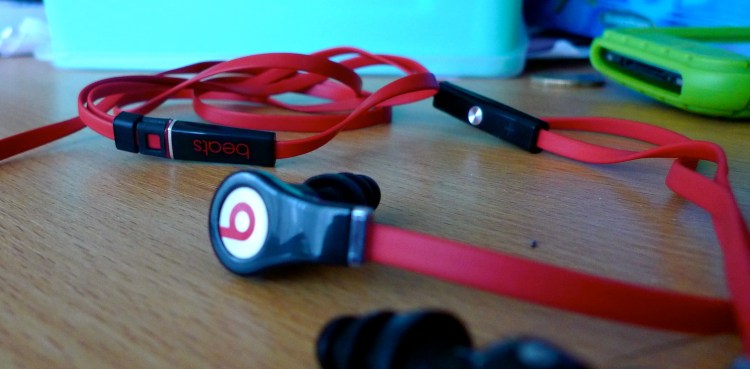In Beats, Apple purchased a collection of assets that, on paper, didn’t seem to offer much that the company couldn’t have acquired elsewhere and for less.
Alternatively, Apple could have built or pieced together bits of Beats itself. But now that Apple has rounded up the rounded “b” under its auspices, what can we expect from this assemblage of sound and silicon beyond continuing Beats’ electronics and music service?
The first and perhaps easiest step would be integrating Beats into Apple’s existing product line. Apple has never had a sub-brand for its audio systems. Failing to imbue MacBooks, iPads, and iPhones with Beats audio processing would be a wasted opportunity. Beats’ fractured dealings with HP and HTC over the years meant that the former owned the Beats license for laptops and tablets while the latter owned it for smartphones.
Similarly, Beats audio processing and access to the Beats Music service would likely come to Apple TV at some point. And while we may have seen the last revision of the iPod line, the white earbuds that they made spring from consumers ears around the globe could potentially be branded with Beats’ trademark lower case letter the way that HTC did with the Rezound. That didn’t do much to help that handset, but HTC has clearly had deeper issues beyond a lack of deep bass.
Speaking of Beats’ exes, while the company will part ways with Apple’s direct competitor, HP, Apple and Beats continue to have their eyes on the road. The audio company has licensed its audio algorithms to Chrysler. Similarly, Apple has been reaching out to many car manufacturers via its CarPlay initiative to provide iPhone access in the vehicle. While it’s unlikely that Apple would insist on some kind of Beats processing bundled with CarPlay competition, being part of Apple could open up more car doors for Beats.
And then there are the products for which neither company has made a strong push. One of these is the home audio market and particularly the whole-home audio market that Sonos has driven. It’s now attracting the attention of Samsung, Denon, and others. Apple has dabbled here with products like AirPlay, which has seen limited licensing, and the now-forgotten iPod Hi-Fi, a product that was roughly in the same class as the Beatbox Portable.
But Apple’s and Beats’ assets would be a natural marriage for this kind of move assuming that the company thought the opportunity was large enough. Indeed, it might not involve much more than adding an enhanced version of AirPlay to the evolution of products such as the Beats Pill XL.
As when discussing the assets Beats brought to Apple, the short list of the kinds of things the two companies could do together doesn’t inspire. Things could become a bit more interesting, though, when one factors in the Beats Music service. Much as Apple moved to compete against Amazon in the e-book services market, it faces a growing dominant music service in Spotify.
Whether it be at home, on the go, or increasingly in the car, Spotify fans know the pleasure of being able to enjoy virtually unlimited music in a variety of settings. Apple would like to bring that experience to its customers in an integrated way. And, of course, collect a monthly fee for the privilege.
Volume Up is a regular column on consumer technology and digital ecosystems. Ross Rubin is principal analyst at Reticle Research and founder and editor of the crowdfunding product site Backerjack. he also blogs about the tech industry at Techspressive.
VentureBeat's mission is to be a digital town square for technical decision-makers to gain knowledge about transformative enterprise technology and transact. Learn More

